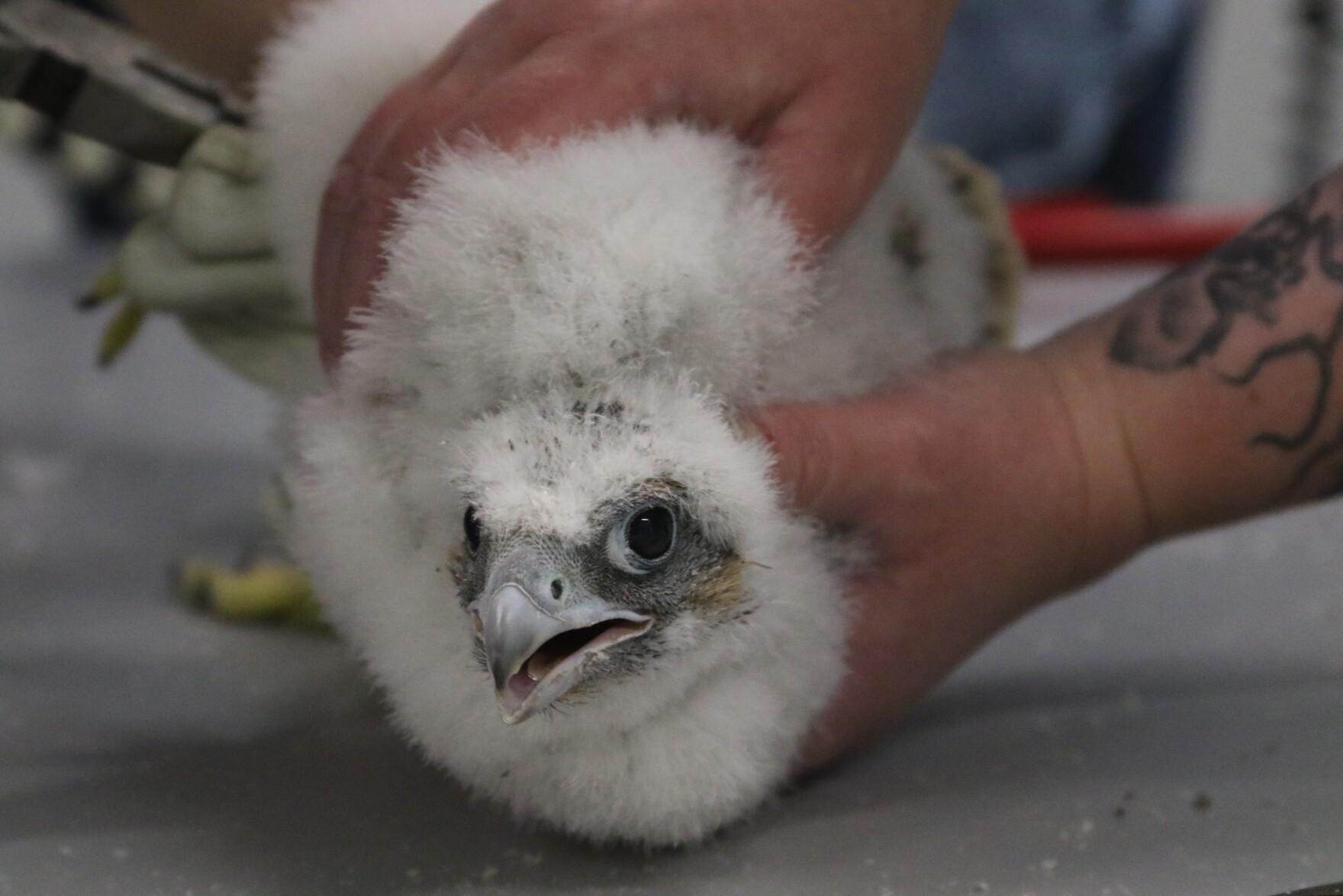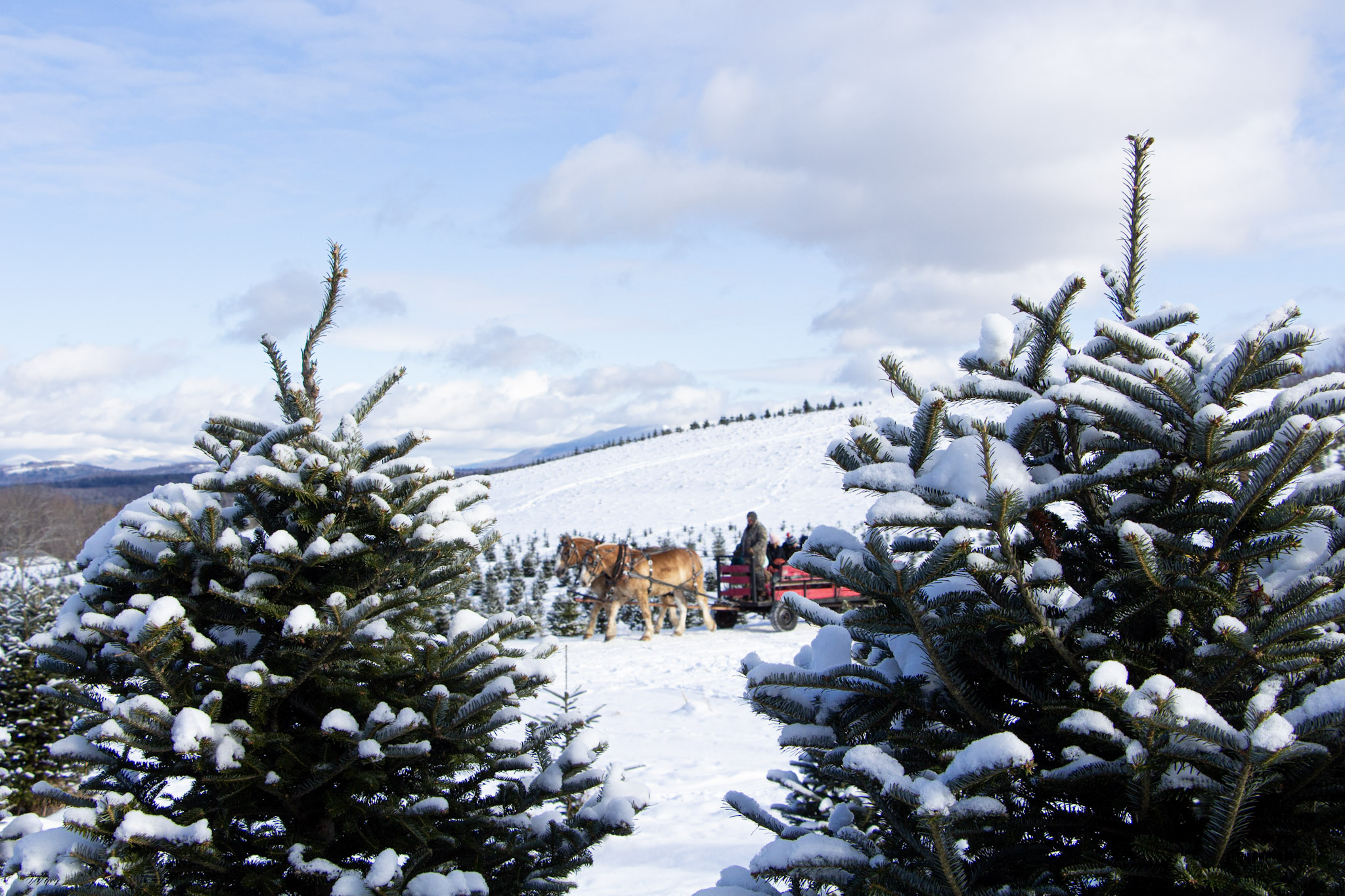- Tags:
- Something Wild,
- Wildlife

Peregrine courtesy Mark Timmerman
Every spring for the past 25 years, Something Wild co-host Chris Martin from New Hampshire Audubon has been visiting the 13-story Brady Sullivan Tower in Manchester.
As a raptor biologist, he goes there each year to check on a pair of peregrine falcons that nest on the building, and to examine and band their chicks.
This year, he took Something Wild along with him to watch the process of banding this year’s trio of chicks.
Peregrines love to nest in high inaccessible places, like on a ledge of a sheer cliff. But cities can be good wildlife habitat, too.
This falcon pair has decided that a south-facing ledge is an ideal spot to raise their young. They’re not wrong.
The ledge has an overhang that protects the nest from late spring snow and rain, and they have a sweeping view over the city and down the Merrimack River valley.
As impressive a view as from any cliff, it lets them pick out potential prey and spot approaching predators.
By the mid-1960s, peregrine falcons had disappeared from the entire eastern U.S. due to the use of DDT and its eggshell-thinning effects. Some 60 years later, thanks to work by raptor experts across North America, they have recovered.
There are now about 30 breeding territories in New Hampshire. In Manchester, they've produced young every year since a pair first settled here in 2001. These two individual birds have been together in the Queen City since 2015 — that's 11 years!
The Manchester peregrines have included three different females and two different males. Female number three, who's here today, is 11 years old. There have been two males: Male number one lasted 13 years. Male number two has lasted for 12 years.
“They've produced 76 young prior to this that have fledged from this box,” says Martin. “And all of them have been ID tagged, so we've been able to encounter them again.”
Some of the chicks previously banded in Manchester have been found nesting in Lawrence and Haverhill, Massachusetts, and as far afield as the Casco Bay Bridge in South Portland, Maine, and the library building at the University of Massachusetts in Amherst.
In total, 36 banded birds have been encountered again, nearly a 50% return rate in terms of finding out where they ended up, at least at one point in their lives.
Peregrines usually lay four or five eggs, but, according to Martin, this year was unusual, because several of the eggs were laid more than five days apart, twice the normal interval. This means hatching was spaced out, too. Martin knows this because the nest is monitored 24/7 by a webcam.
One of the first things to develop to adult size is the feet and legs. As they mature, they're not going to exceed the size of the leg band.
Licensed bird banders use aluminum bands that are sized to exactly fit a particular species, and the band’s smooth surface doesn’t abrade the skin on the bird’s leg.
On banding day, Martin estimates that the oldest chick is 26 days old while the youngest is 17 days old, a big span that makes it tricky to find just the right time to place ID bands on all the chicks.
“This is almost literally the only day we could band them all,” he says. ”When they're under 17 days old, their legs are frail, and it's difficult to tell which size band to put on them. They're not ready for that yet. Beyond 26 or 28 days, they're so mobile that just the process of retrieving them from the box could cause one to jump outside of the box.”
They use two types of leg bands: a silver federal band with a 9-digit code wrapping completely around the band, kind of like a social security number for each individual bird.
The other band is brightly colored with simple contrasting codes repeated several times, making it fairly easy to read through binoculars or with a camera.
Martin uses big pliers to crimp the leg bands.
These chicks are just three weeks old, but they are feisty while being handled. There’s a lot of squawking, a normal reaction for the chicks, who have their defenses up.
One at a time, the bands are placed on each chick’s leg. The process is done quickly and carefully, minimizing stress and avoiding harm to the chicks.
The impact of the stress and handling while banding the chicks is a thoughtfully-considered trade-off that allows biologists to get more information for years to come. The falcons will wear these bands for the rest of their lives.
After all three chicks are banded, Martin cleans out the nest box. The biologists save the unviable eggs for later study, and examine the feathers from the nest box to see what the peregrines have been consuming. Sometimes, they find a leg band from a bird unlucky enough to be prey for the “sky hunters.”
Each chick is carefully returned to the box. The mother falcon is watching intently. The female falcon is bigger than the male, and she is protective of the nest site.
Martin is very aware of the nearby presence of the adult falcons during this process. “My whole arm is exposed at this point,” he says.
“The adult female is perched right on the lip of the ledge, staring me in the face. The male just landed on the perch; he's a little skittish. If she was any more aggressive, she'd be in here grabbing at me.”
“In the end,” he says, “she ends up with all her babies back, and in her bird brain she thinks, ‘I chased the predator away. I did a good job.’ And everything's fine again. In an hour from now, they'll all be sleeping. Everything will be back to normal.”
A few weeks later, the oldest chick has already fledged, and Martin is in the North Country, monitoring and banding chicks from another species that has rebounded, the American eagle.
Something Wild is a partnership of NH Audubon, the Forest Society, and NHPR.
